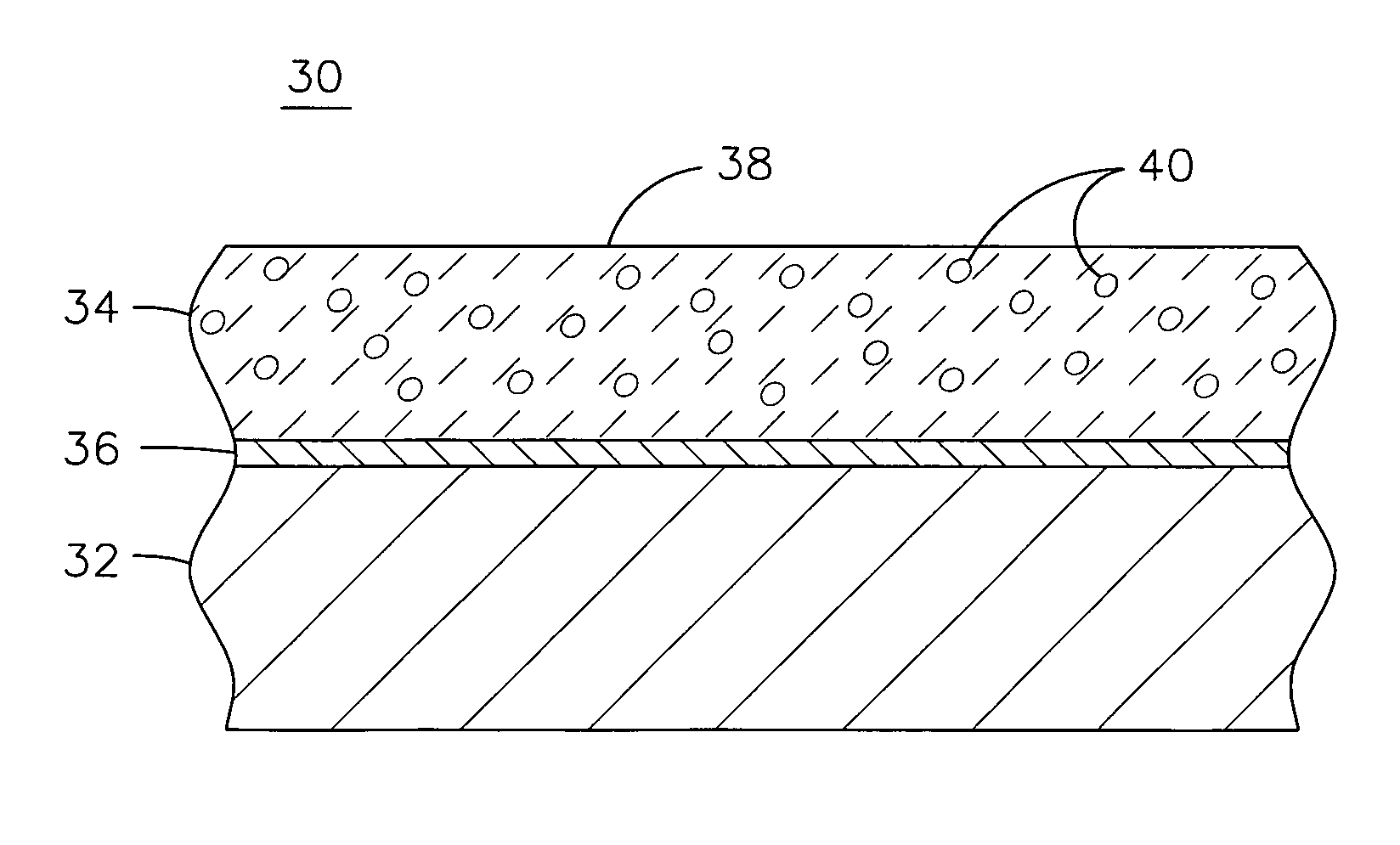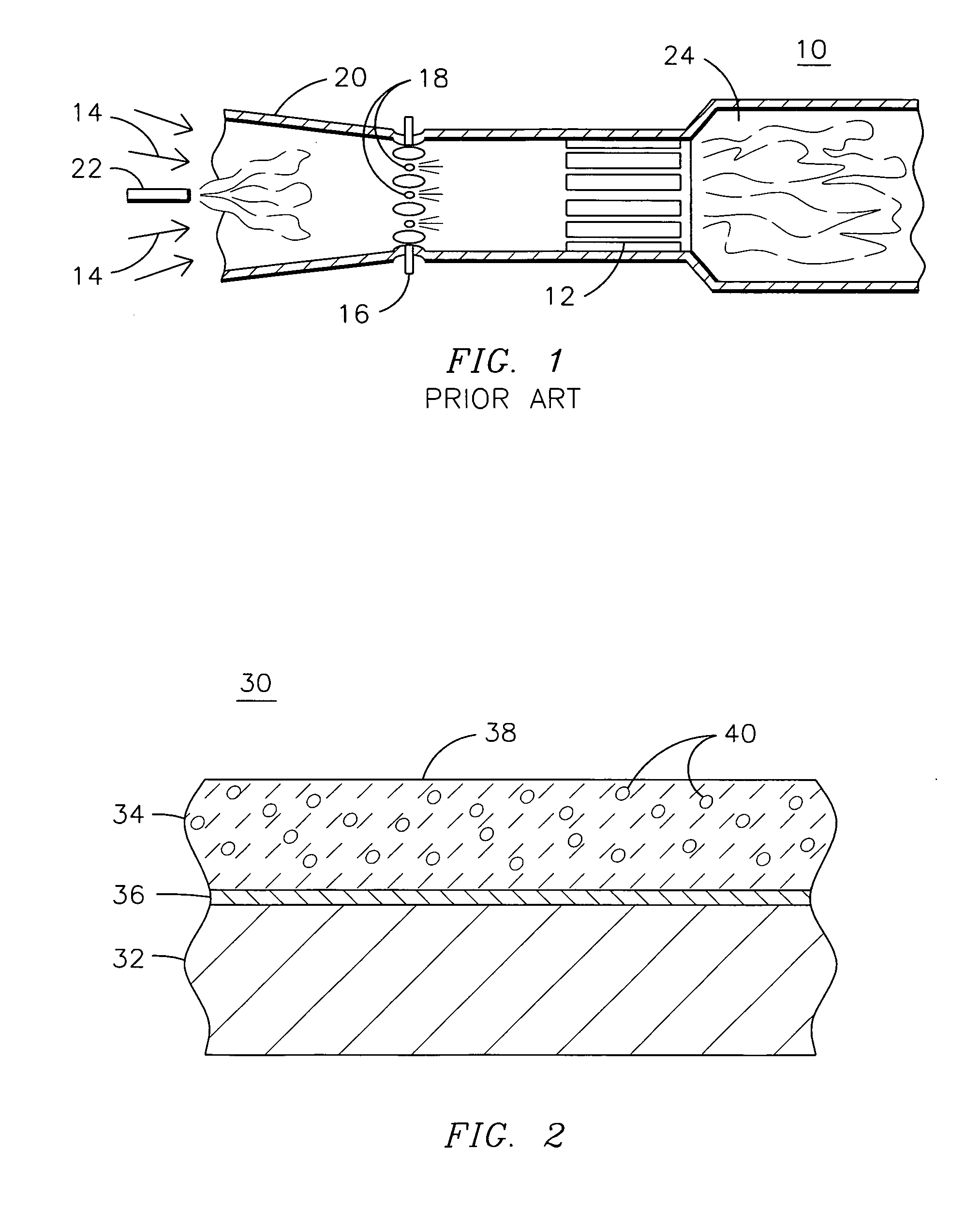Catalytic thermal barrier coatings
a thermal barrier coating and catalytic technology, applied in the direction of catalytic material combustion, combustion types, separation processes, etc., can solve the problem of increasing the temperature of both the catalyst and the catalyst substrate, the operating temperature limit of the underlying metal substrate material, and the environment of the gas turbine is very hostil
- Summary
- Abstract
- Description
- Claims
- Application Information
AI Technical Summary
Problems solved by technology
Method used
Image
Examples
Embodiment Construction
[0010] Traditional catalytic systems incorporate an active precious metal catalyst such as palladium on a γ-Al2O3 washcoat. The present inventors have found such systems to exhibit poor phase stability, surface area loss, and rapid surface diffusion causing catalyst agglomeration at the very high temperatures desired for modern gas turbine engine designs. For example, the γ-Al2O3 phase having a specific surface area (SSA) value of 125-250 m2 / g transforms to either θ or δ phase with an SSA value of 18-30 m2 / g at 450° C., which then transforms to α phase with an SSA value of 5 m2 / g between 900-1100° C. To solve these problems, the present inventors have innovatively modified ceramic thermal barrier coating (TBC) materials that are known to exhibit acceptable high temperature insulating characteristics with ionic substitutions that serve to improve the catalytic activity of the materials. In certain embodiments, the inventors have also incorporated precious metal crystallites into the ...
PUM
| Property | Measurement | Unit |
|---|---|---|
| Specific surface area | aaaaa | aaaaa |
| Specific surface area | aaaaa | aaaaa |
| Specific surface area | aaaaa | aaaaa |
Abstract
Description
Claims
Application Information
 Login to View More
Login to View More - R&D
- Intellectual Property
- Life Sciences
- Materials
- Tech Scout
- Unparalleled Data Quality
- Higher Quality Content
- 60% Fewer Hallucinations
Browse by: Latest US Patents, China's latest patents, Technical Efficacy Thesaurus, Application Domain, Technology Topic, Popular Technical Reports.
© 2025 PatSnap. All rights reserved.Legal|Privacy policy|Modern Slavery Act Transparency Statement|Sitemap|About US| Contact US: help@patsnap.com


